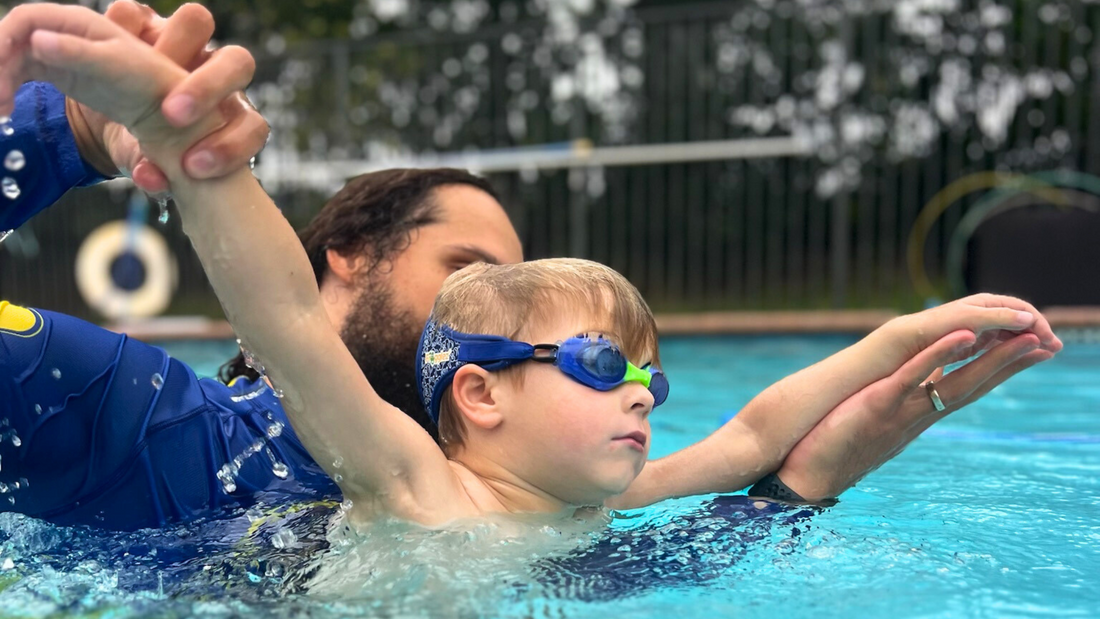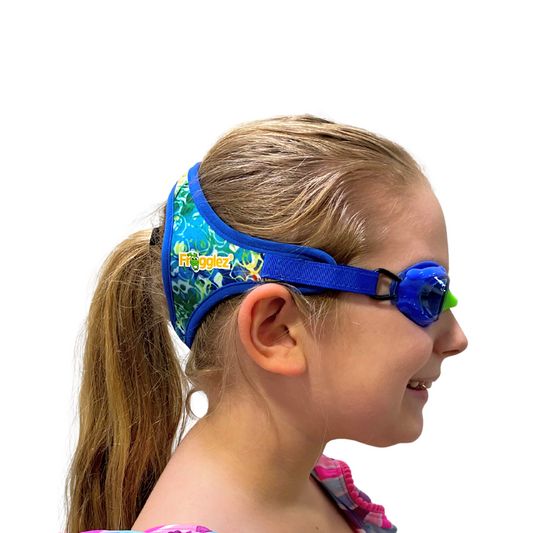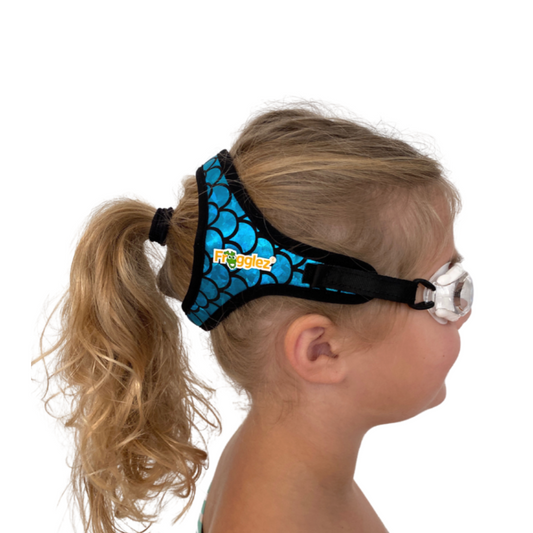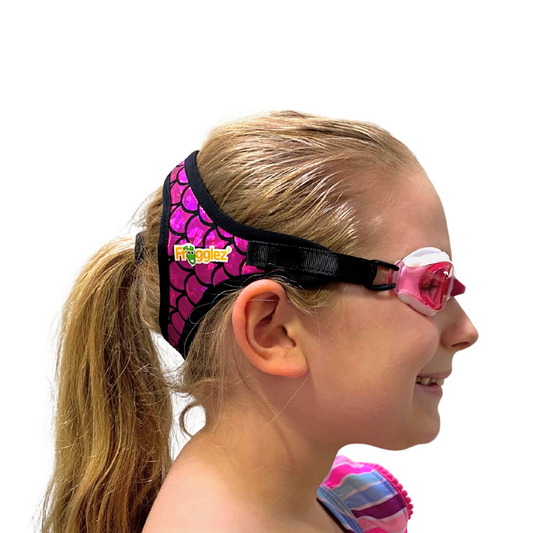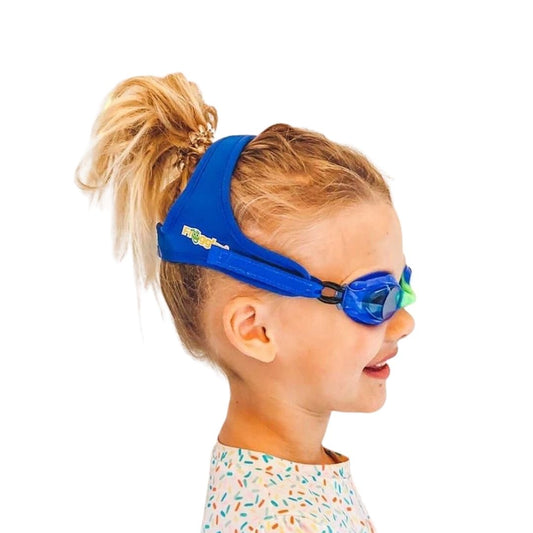Every swimmer will tell you that swimming goggles that fit well are critical to a successful swim. Finding watertight goggles that form a seal with easy-to-adjust straps that stay on while kids splash, play, and laugh can be tough. Every time they move, the flexible silicone connection between the goggles and their face adjusts. Goggle straps provide just enough resistance to keep the watertight seal working without being too tight.
Swimmers can see clearly underwater with goggles that fit
Goggles that fall off in the middle of a swim are a nightmare for swimmers. Chlorinated water rushes in, irritating your eyes. It’s difficult to judge the distance of the wall or see where to start your turn. In a sport where .01 seconds is the difference between winning and losing a race, you can’t afford distractions.
After years of relentless training, Michael Phelps still won his race after his goggles slipped in the 2008 Olympics, but a good pair of goggles are still game changers for the rest of us. After all, if they’re constantly falling off, leaking, or fogging up, they can cause a lot of frustration.
Goggles weren’t standard swimming equipment when Mark Spitz went to the 1972 Olympics, but sports science has progressed a lot since then. The technology advances made in suit and cap design also affected goggle technology.
Modern goggles allow swimmers to see as well underwater as they can on land. Swimmers can judge distance easily and avoid collisions.
Goggles protect your eyes from chemicals and debris
Pool water can be hard on your eyes, and even the cleanest pool contains floating debris and chemicals. With every splash, it washes away your natural tears and exposes your eyes to harmful pool chemicals used to maintain the pH balance. The chlorine used to keep the pool clean can irritate eyes, leaving swimmers with red, itchy, and uncomfortable peepers. Any bacteria that survive the chlorine could cause eye infections.
Goggles allow you to open your eyes underwater comfortably without exposing them to dirt, chlorine, or worse. The American Academy of Ophthalmology recommends wearing goggles to protect your eyes every time you swim. Contacts and water are a dangerous combination, as bacteria can grow on lenses after just one swim and potentially lead to possible painful infection or corneal damage. If you need to see, prescription goggles will keep your eyes healthy and your vision clear in the pool.
Sun protection for your eyes in and out of the pool
It’s hard to backstroke in a straight line with the sun in your eyes. It really hurts when veering off track makes your hand hits the lane line going full speed. Even worse, weaving back and forth in your lane means you’re swimming farther and adds time to your swim. However, the pain of losing your race won’t compare to UV radiation from the sun can damage your eyelids, cornea, lens and other parts of the eye. UV exposure contributes to the development of cataracts and other degenerative conditions.
Tinted goggles provide UV protection for your eyes whether you’re on deck or in the water. They filter light so you can see better and protect your eyes from damaging UV rays so you can swim faster and save yourself a couple of bruises.
Goggles protect your eyes while swimming
You don’t have to settle for goggles that don’t work. Frogglez Goggles stay in place without leaking, fogging, or falling off. See clearly and protect your eyes from damage while you’re in the pool-and on deck-with goggles that stay right where you need them.
Swimming is easier to learn with Frogglez Goggles.

Picture by: @HighwavesSwimSchool

